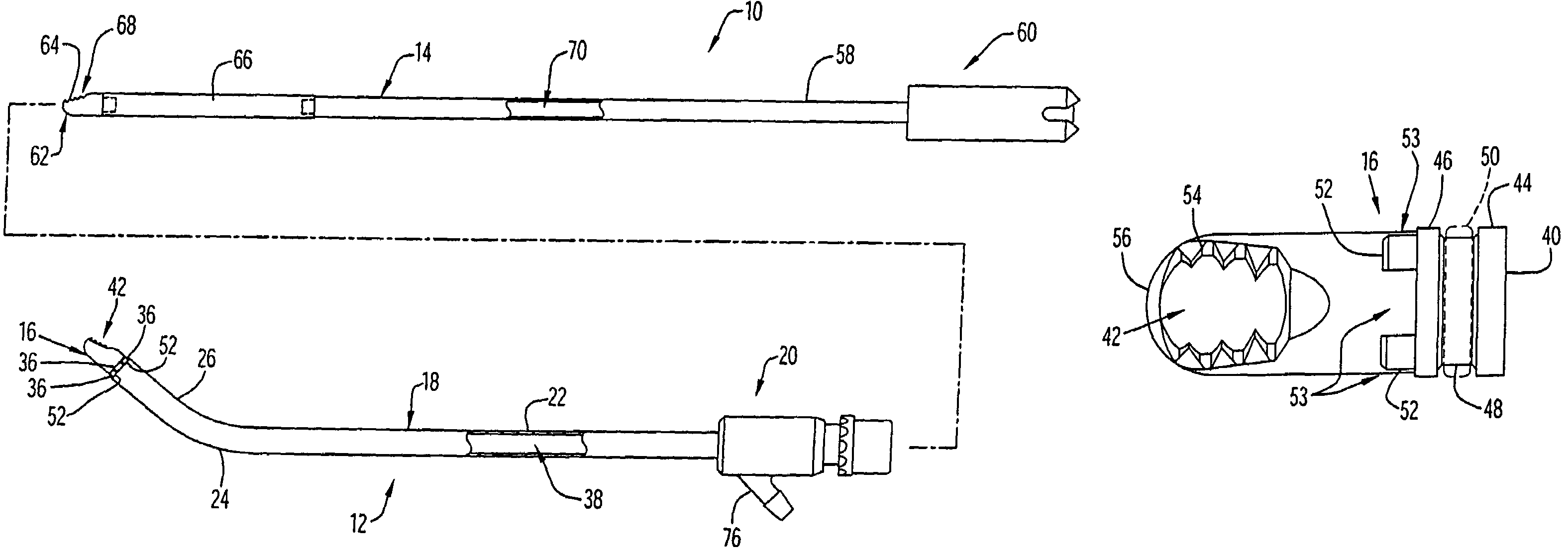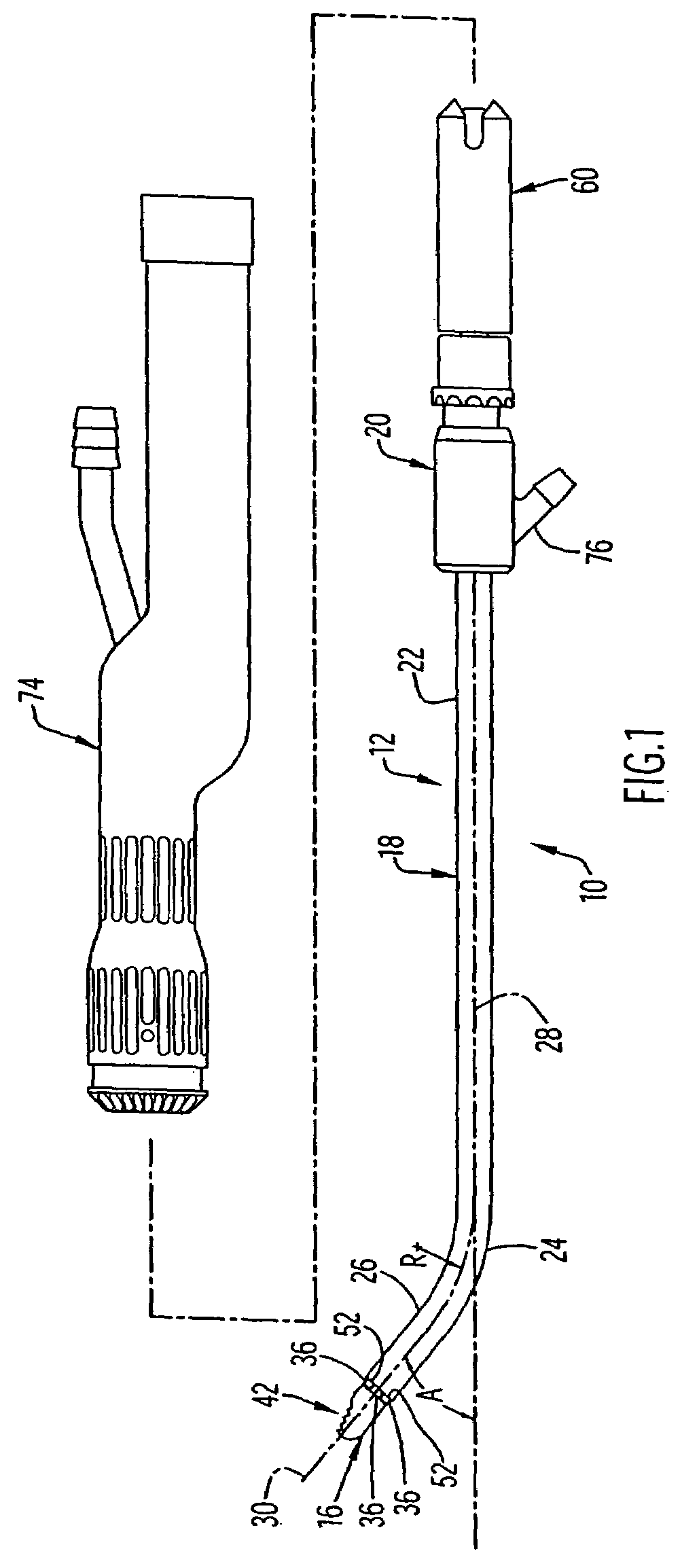Angled tissue cutting instrument having variably positionable cutting window, indexing tool for use therewith and method of variably positioning a cutting window of an angled tissue cutting instrument
a tissue cutting and angled technology, applied in the field of angled tissue cutting instruments, can solve the problems of inability to rotate the distal end, the handpiece cannot be oriented for proper grasping and manipulation by the surgeon, and the directional positioning of the cutting window cannot be accomplished without, so as to achieve selective directional positioning of the cutting window during surgery, the effect of directional positioning of the cutting window and convenient us
- Summary
- Abstract
- Description
- Claims
- Application Information
AI Technical Summary
Benefits of technology
Problems solved by technology
Method used
Image
Examples
Embodiment Construction
[0054]An angled tissue cutting instrument or blade 10 is illustrated in FIGS. 1 and 2 and includes an elongate outer tubular member 12 and an elongate inner member 14 rotatably or movably disposed within the outer member. Outer member 12, which may be considered an outer blade member, includes a distal end or tip 16 and an elongate body 18 having a forward end rotatably mounting distal tip 16. Body 18 has a rearward or proximal end coupled to an outer member hub 20, a proximal length portion 22 extending distally from outer member hub 20 to a bend, curve or angle 24, and a distal length portion 26 extending distally from bend 24 to the forward end at an angle A relative to a central longitudinal axis 28 of the proximal length portion. The proximal and distal length portions 22 and 26 are each shown as having a longitudinally or axially straight configuration with angle A defined between a central longitudinal axis 30 of the distal length portion and the central longitudinal axis 28 ...
PUM
 Login to View More
Login to View More Abstract
Description
Claims
Application Information
 Login to View More
Login to View More - R&D
- Intellectual Property
- Life Sciences
- Materials
- Tech Scout
- Unparalleled Data Quality
- Higher Quality Content
- 60% Fewer Hallucinations
Browse by: Latest US Patents, China's latest patents, Technical Efficacy Thesaurus, Application Domain, Technology Topic, Popular Technical Reports.
© 2025 PatSnap. All rights reserved.Legal|Privacy policy|Modern Slavery Act Transparency Statement|Sitemap|About US| Contact US: help@patsnap.com



